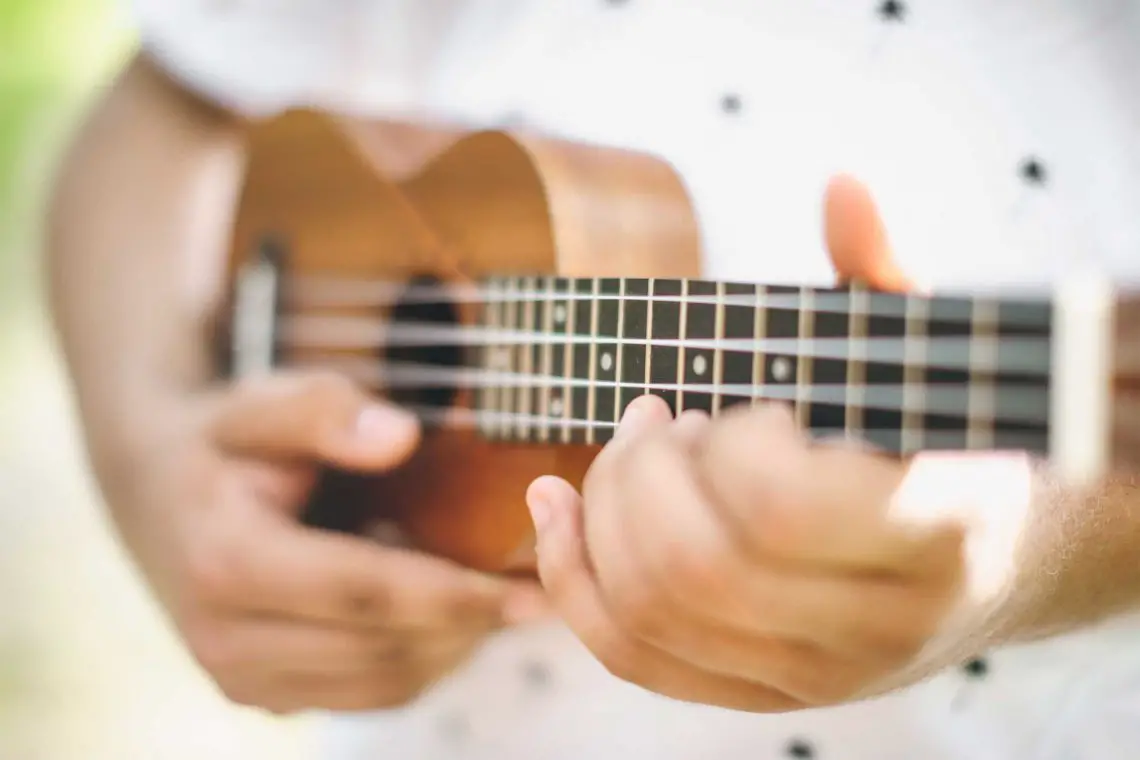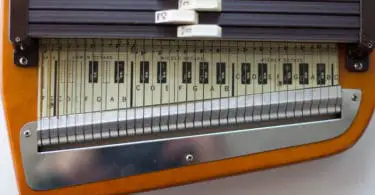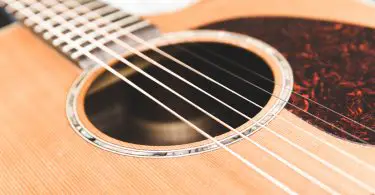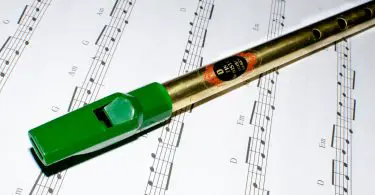The ukulele is a fun instrument that has been making a comeback in recent years with many people consider learning to play. If you are one of those people, then this article is designed to answer the most common questions buyers ask, tell you the information you need to know to make an intelligent buying decision.
We welcome your feedback if you are an experienced player having valuable information to share. We also want to hear from you if you have questions we have not answered.
I have played the piano for 47 years and taught piano lessons for five. I have also played the cello for 25 years. I have taken music lessons at the University of Northern Iowa. I am the parent of five children: one plays the ukelele for fun, one plays the tuba and one plays the cornet. I have spent hours searching this subject as I want it to be my next instrument to master.

Credit: C.F. Martin & CO., Inc.
Top Pick: Martin C1K Concert ukulele
The koa wood body allows the instrument to have a beautiful lively sound, a morado fretboard makes quicker tempos easier, and a hardwood neck gives the instrument added strength in the fretboard.
How to Choose a Ukulele
There are many different factors that buyers need to consider in choosing the right instrument for themselves or a loved one. The decision-making process begins with choosing the appropriate size:
How many strings does a ukulele have?
A standard ukulele has 4 strings tuned to G-C-E-A with a range of about an octave + major 6th (from middle C). Six-string and eight-string ukuleles are also available for players who are looking to diversify the type of sounds their instrument can make, though they are more difficult to play.
Soprano or Standard Ukulele
The smallest size is the soprano or standard ukulele, measuring 21 inches in length with a 13-inch staff. While these instruments are ideal for people and students of smaller stature, some larger people find them extremely challenging to play.
When Englishman Edward William Purvis first played before King Kalākaua officers who introduced Hawaii’s love affair of the ukulele it is very likely this was the size that he played.
Concert Ukuleles
Just two inches bigger is the concert ukulele. These instruments usually measure 23 inches in length and have a 15-inch staff. Many people find that the extra two inches make this instrument easier for larger fingers to play more easily.
Concert ukuleles are louder than their soprano counterparts.
Tenor Ukuleles
About five inches longer than the standard ukulele, the tenor instrument measures 26 inches in length with a 17-inch staff. This additional length gives these instruments a deeper pitch because string length and tension work together to determine how the instrument sounds.
Tenor ukuleles produce a more resonant sound.
Baritone Ukuleles
The deepest ukuleles are the baritone ukuleles measuring 30 inches in length with a 19-inch staff. They are as big or a little big bigger than most six-string folk guitars.
Many people who play the guitar find the transition to this instrument very easy because it is tuned the same as the four highest strings on a guitar.
Ukulele Shapes
Ukuleles come in three different shapes:
Guitar – The most common, also called the figure eight, which has a smaller lower bout than a guitar but looks similar in many ways.
Pineapple – Shape created by the Kamaka Ukulele Company in Hawaii, produces a very mellow sound.
Paddle Boat – The least common shape for a ukulele, looks exactly like the oar of a boat. These usually have to be specially ordered with luthier Jerry Hoffmann of New Haven, Missouri, getting many rave reviews.
Solid Wood vs. Laminate Wood
The wood used in the construction of a ukulele is extremely important. Ukuleles made from solid wood are higher quality than those made from laminate woods. As laminate wood ukuleles have several layers of wood pressed together, they generally do not resonate as warmly.
The advantage to laminate wood ukuleles is that they are not as prone to cracking when exposed to environmental extremes. Laminate wood ukuleles tend to sound the same throughout their lives while solid-wood ukuleles tend to mellow with age.
A compromise for some buyers who need to stay on a smaller budget is to buy an instrument with a solid-wood top as that area affects the sound the most, and these instruments have fewer problems handling the environment.
Tonewoods
The instrument will sound different depending on the variety of wood chosen. Each provides a slightly different tone to the ukulele, so it is important that the player chooses the one that suits their personal tastes the best.
Mahogany
Ukuleles made from mahogany wood are very popular with almost all ukuleles having a mahogany neck. This wood allows the instrument to produce a very focused sound. When compared with other choices it produces thicker low-mids and high-mid sounds.
Koa
In the United States, the wood most synonymous with ukuleles is koa wood, generally from Hawaii. It allows the ukulele to produce a more direct sound and is ideal for strumming and picking. This wood produces a variety of unique colorings in ukuleles, so no two look the same.
The drawback in having a ukulele made completely from koa is that the wood does not work very well for the soundboard. Therefore, manufacturers usually combine a koa wood ukulele with a spruce soundboard producing a very warm sound, cedar producing more complex midtones, or redwood producing a very full sound.
Mango
If the wood is properly cut and carefully dried, then a mango wood instrument can sound very warm and inviting. The sound is usually fuller than either the koa or the mahogany. The problem is that these instruments tend to crack very easily if proper care is not taken during their creation. Mango wood also has the most variation in
The problem is that these instruments tend to crack very easily if proper care is not taken during their creation. Mango wood also has the most variation in sound of any commonly used wood.
Rosewood
Some manufacturers make ukuleles completely out of rosewood while others use it just for the sides and backs. This wood produces a thick high range while adding a richness to the mid and lower ranges.
Maple
A few manufacturers use maple for their instruments because it produces a very clear sound. Maple is often paired with spruce in instruments used for recording. These instruments usually do not project very well for people who will be playing live.
The Competition
After hours of testing and research, here's the final competition.
| Instrument | Rating | Current Pricing |
|---|---|---|
Martin C1K Concert Ukulele | Koa wood allows the instrument to have a beautiful lively sound |  |
Kala KA-SSTU-C Travel Concert | Offers a robust sound |  |
Ibanez UEW5E Ukulele | under saddle natural pickup ensures that it fits properly into external systems |  |
KALA Makala MK-P Soprano Ukulele | Made from agathis, a softer sounding wood similar to mahogany |  |
Lanikai Waimea Ukulele | Features a bone neck and saddle |  |
Bruce Wei Gypsy Tenor Ukulele | koa wood back and sides, includes a cubic zirconia headplate for a more mellow sound |  |
Ukulele Recommendations
We have searched over 60 different ukuleles to make our top picks for people who are wanting to begin playing this instrument. We understand that the top ukuleles are usually handmade to specifications from the buyer and the luthier. These are our top choices for people who want to buy a model without having to wait as long as a year to have an instrument made.
Martin C1K Concert Ukulele

Credit: C.F. Martin & CO., Inc.
Since 1916, C.F. Martin & Co. has been making beautiful ukuleles and their C1K ukulele is no exception.
These ukuleles feature low-grade koa wood from Hawaii which is the only place in the world that this tree grows. The wood is considered low-grade for its unique beauty and not because of inferior quality. The instrument will look more uniform than those made from higher grade koa wood.
Martin begins the process of shaping the wood in Hawaii where it is allowed to naturally dry before it is shipped to Mexico where the ukulele is carefully constructed in Martin’s own factory. Using koa wood allows the instrument to have a beautiful lively sound.
Enhancing that sound is a hardwood neck giving the instrument added strength in the fretboard. Enhancing the beauty of the instrument is a high-quality satin lacquer helping ensure that each instrument’s beauty shines through. The wood on the fretboard is morado (‘Pau ferro’) which is an ideal choice because it is hard with very small pores helping the player achieve quicker tempos easier.
This concert ukulele measures 23.25 inches long with a 15-inch scale. The tuning knobs are white button open gear knobs that keeps the instrument well tuned through long playing gigs. The neck is put on with a simple dovetail, so it should easily stay in place for years.
This instrument compares very favorably to their higher-end instruments except that with those instruments they use a more ornate gear design is used along a higher rated koa wood to give the instrument a more beautiful appearance. This instrument is backed by Martin’s strong reputation as being an industry leader.
Its concert size should make it easier for almost everyone to play it especially players who have experience playing the guitar and are looking for a crossover instrument.
Kala KA-SSTU-C Travel Concert

Credit: KALA BRAND MUSIC CO.
If you plan on taking your ukulele on trips, then the Kala KA-SSTU-C may be the perfect choice for you because it does not measure quite two-inches thick at its thickest point.
This ukulele offers a robust sound because of its spruce top and mahogany sides helping to reverberate the sounds coming from its standard double boat-shaped body finished with a clear satin coating. Adding strength to this instrument’s body is a rounded back and a thick neck heel.
Helping players hit the right chords, this instrument features painted fretboard marks on the front and top of the fifth, seventh, 10th and 12th frets. Sealed gears with small black plastic knobs help to keep this instrument in tune.
Whether you get to take it traveling or are just playing it from your sofa in your living room; this concert ukulele is a tough one to beat. The plastic knobs keep this one from placing any higher, but it is hard to beat at this price.
Ibanez UEW5E Ukulele

Credit: Ibanez guitars
While Ibanez is better known for their outstanding line of guitars, they have recently entered the ukulele market and their instruments are quality. The Ibanez UEW5E ukulele is an electrical concert ukulele that is made with mahogany back and sides.
This ukulele features a 14.5 inch rosewood fretboard with 19 frets. The fretboard has a slightly more rounded shape than found on most ukuleles. The open pore wood on these ukuleles is very lovely. The bridge is also made from rosewood. This instrument has the traditional cutaway ukulele shape.
This ukulele features an under saddle natural pickup ensuring that it fits properly into external systems. The quality onboard tuner helps players easily keep this instrument in tune. It has silver open gear tuning knobs that are easily adjustable. Players love this instrument for indie-style music.
The Ibanez UEW5E would have placed higher if it had a truly unique shape or a more traditional shape.
KALA Makala MK-P Soprano Ukulele

Credit: Amazon.com
KALA is the leading manufacturer of ukuleles in the world. This ukulele is part of their quality entry-level models, so it is not quite as nice of some of their more expensive instruments. Their quality is well known. If you are looking for a pineapple-shaped ukulele, be sure to consider the MK-P.
The top, body and sides of this instrument are made from agathis wood which is a softer sounding wood similar to mahogany in many ways. The neck on this pineapple ukulele is mahogany while it has a rosewood fretboard with brass fretwork. Helping the new player master fingering, this instrument has dot inlays at the fifth, sixth and tenth frets.
It is easy to feel the passion that KALA puts into producing their instruments, the first time you play this ukulele. There is no doubt that this is a quality instrument.
Lanikai Waimea Ukulele

Credit: Lanikai Ukuleles
If you are looking for a ukulele that is 100 percent Hawaiian made, then make sure to consider the Lanikai Waimea super concert ukulele.
This beautiful instrument is made from the top 1 percent of koa wood in the world. The mahogany tenor-sized neck carries an Indian rosewood 19-fret fingerboard enhancing the instrument’s beauty while ensuring that it is easy to play.
This ukulele also features a bone neck and saddle. It has abalone inlays on the fretboard making it even easier for players to keep track of where they are on the fretboard when playing chords. It features solid sitka spruce bracing helping ensure that this ukulele provides years of playing enjoyment.
This ukulele has a beautiful hand-oiled and wax coating, and will take some care to keep up that superior finish.
Bruce Wei Gypsy Tenor Ukulele

Credit: Amazon.com
Bruce Wei ukuleles are all made by hand in Saigon. When examining the seams on these instruments, the quality of craftsmanship that goes into their production is evident.
The gypsy tenor has koa wood back, sides and includes a cubic zirconia headplate allowing the instrument to produce a more mellow sound. Making it unusual are the beautiful inlays on the neck resembling white stems and leaves.
Looking at this ukulele, one of the first things you will notice is the unique half-circle soundhole. Also making it unusual are the beautiful inlays on the neck resembling white stems and leaves.
On this instrument, which is about 26 inches, you will also notice that the rosewood neck gets wider as you near the fingerboard. At the nut, the neck measures 1.457 inches while at the 12th fret it measures 1.72 inches. There is a total of 20 frets.
This ukulele contains real buffalo ebony nuts on its tuning mechanism. It has Aquila strings. These ukuleles are low geared, so players can expect to spend some time in the beginning tuning up their instrument.
These instruments seem to handle environmental changes extremely well. The first few years, this company had some quality control issues which they seem to have solved, but time will tell.








The greatest thing about the Uke is that you can have a ton of fun on them no matter what. I mean I’ve been lucky enough to give a few good ones a go. One time even strummed a Koaloha custom in a friends collection I don’t doubt was worth more than my kids car… sounded just beautiful and had some nice weight to it. But you can put even a $100 one in my hands around a fire and it’ll be a blast. Got a few good ones in the article here. Big fan of this instrument. If anyone reading hasn’t given it a go time to pick one up.
Lots of good advice in this article. I’m especially a big fan of the Martin C1K and T1K ukes–great bang for the buck. For some people they might be a little pricey, especially beginners. These days it’s actually possible to get a pretty killer uke for under $100. If anybody is interested I’ve put together a guide of the best cheap ukuleles.
I’ve put together a guide of the best cheap ukuleles.